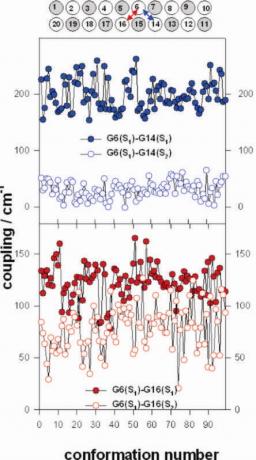

The present communication deals with the excited states of the alternating DNA oligomer (dCdG)5.(dCdG)5 which correspond to the UV absorption band around 260 nm. Their properties are studied in the frame of the exciton theory, combining molecular dynamics simulations and quantum chemistry data. It is shown that the dipolar coupling undergoes important variations with the site and the helix geometry. In contrast, the energy of the monomer transitions within the double helix is not sensitive to the local environment. It is thus considered to be distributed over Gaussian curves whose maximum and width are derived from the experimental absorption spectra of nucleosides in aqueous solution. The influence of the spectral width on the excited states delocalization and the absorption spectra is much stronger than that of the oligomer plasticity. About half of the excited states are delocalized over at least two bases. Many of them result from mixing of different monomer states and extend on both strands. The trends found in the simulated spectra, when going from non-interacting monomers to the duplex, are in agreement with experimental observations. Conformational changes enhance the diversity of the states which can be populated upon excitation at a given energy. The states with larger spatial extent are located close to the maximum of the absorption spectrum.
•  Physics and chemistry for life sciences and the environment › Physics and life
Physics and chemistry for life sciences and the environment › Physics and life
• Service des Photons Atomes et Molécules • Service des Photons Atomes et Molécules












